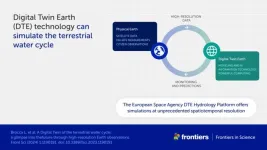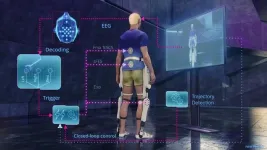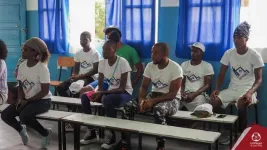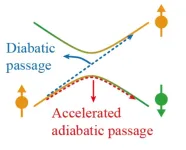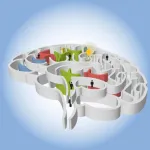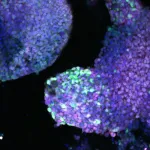(Press-News.org) The water cycle looks simple in theory — but human impacts, climate change, and complicated geography mean that in practice, floods and droughts remain hard to predict. To model water on Earth, you need incredibly high-resolution data across an immense expanse, and you need modeling sophisticated enough to account for everything from snowcaps on mountains to soil moisture in valleys. Now, scientists funded by the European Space Agency have made a tremendous step forward by building the most detailed models created to date.
“Simulating the Earth at high resolution is very complex, and so basically the idea is to first focus on a specific target,” said Dr Luca Brocca of the National Research Council of Italy, lead author of the article published in Frontiers in Science. “That’s the idea behind what we have developed — digital twin case studies for the terrestrial water cycle in the Mediterranean Basin. Our goal is to create a system that allows non-experts, including decision-makers and citizens, to run interactive simulations.”
A test environment for the planet
In engineering, a digital twin is a virtual model of a physical object which can be tested to destruction without doing real damage. A digital twin of the Earth, constantly updated with new data, would allow us to simulate best and worst-case scenarios, assess risks, and track the development of dangerous conditions before they occur. Such information is vital for sustainable development and protecting vulnerable populations.
To build their digital twin models, Brocca and his colleagues harnessed extraordinary volumes of satellite data, combining new Earth observation data that measures soil moisture, precipitation, evaporation, river discharge, and snow depth. This newly available data, crucial to the development of the models, includes measurements taken much more frequently across space and time: as often as once a kilometer and once an hour. Like a screen with more pixels, this higher-resolution data creates a more detailed picture. The scientists used this data to develop their modeling, and then integrated the modeling into a cloud-based platform which can be used for simulations and visualizations. This is the ultimate goal: an interactive tool anyone can use to map risks like floods and landslides and manage water resources.
“This project is a perfect example of the synergy between cutting-edge satellite missions and the scientific community,” said Brocca. “Collaborations like this, coupled with investments in computational infrastructures, will be crucial for managing the effects of climate change and other human impacts.”
Helping people plan the future
The scientists began by modeling the Po River valley, then expanded the digital twin to other parts of the Mediterranean basin. Upcoming projects plan to expand to cover all of Europe, and future collaborations will allow the same principles to be applied around the world.
“The story started with an initiative from the European Space Agency,” said Brocca. “I said we should start from something we know very well. The Po River valley is very complex — we have the Alps, we have snow, which is difficult to simulate, especially in irregular and complex terrain like mountains. Then there is the valley with all the human activities – industry, irrigation. Then we have a river and extreme events — floods, drought. And then we moved to the Mediterranean, which is a good place to investigate extreme events both for too much and too little water.”
The platform's primary use-case is to enhance flood and landslide prediction and optimize water resource management. To make this work better on a more local level, more granular data and more sophisticated modeling will be needed. For instance, to maximize the potential of a digital twin for agriculture, data resolution should be measured in tens of meters, not hundreds.
Known unknowns
Additional challenges persist. These include delays in the transfer of satellite data to the model, the need for more ground observations to validate satellite data, and the increasing complexity of the algorithms needed to handle the data. Furthermore, no model is perfect, and satellite data can contain errors: uncertainties must be properly characterized so that users have an accurate picture of the model’s reliability. According to Brocca, artificial intelligence and machine learning will have a pivotal role in overcoming these challenges, by enhancing data analysis, collection, and processing speed, and streamlining data quality assessment.
“The collaborative efforts of scientists, space agencies, and decision-makers promise a future where Digital Twin Earths for hydrology provide invaluable insights for sustainable water management and disaster resilience,” Brocca concluded.
The article is part of the Frontiers in Science multimedia article hub ‘The Digital Twin Earth Hydrology Platform’. The hub features an editorial, viewpoints, and policy outlook from other eminent experts: Prof Ana P. Barros (University of Illinois Urbana Champaign, USA), Prof Christina (Naomi) Tague (University of California, Santa Barbara, USA), Prof Zhongbo Bob Su (University of Twente, Netherlands), Dr Yijian Zeng (University of Twente, Netherlands), and Dr Giriraj Amarnath (International Water Management Institute, Sri Lanka).
END
New ‘digital twin’ Earth technology could help predict water-based natural disasters before they strike
Scientists demonstrate the use of next-generation satellite data and advanced modeling to build virtual replicas of the terrestrial water cycle that can track water resources and create detailed simulations of flooding and other extreme events
2024-03-05
ELSE PRESS RELEASES FROM THIS DATE:
Sweetened drinks linked to atrial fibrillation risk
2024-03-05
Research Highlights:
An analysis of health data in the UK Biobank found a 20% higher risk of irregular heart rhythm, known as atrial fibrillation, among people who said they drank two liters or more per week (about 67 ounces) of artificially sweetened drinks. The risk was 10% higher among people who said they drank similar amounts of sugar-sweetened beverages.
Drinking one liter (about 34 ounces) or less of pure juice per week, such as 100% orange or vegetable juice, was associated with an 8% lower risk of atrial fibrillation.
The observational study could not confirm that sweetened drinks cause irregular heart rhythms.
Embargoed ...
Hazardous heat and humidity is widespread in US jails and prisons, and climate change is worsening conditions
2024-03-05
An estimated 1.8 million incarcerated people in the United States have been recently exposed to a dangerous combination of heat and humidity, and on average experience 100 days of these conditions each year—many of them in the 44 states that do not provide universal air conditioning to inmates. Tracking with climate change, in recent decades, the number of dangerous humid heat days in carceral facilities has increased, with those in the south experiencing the most rapid warming.
The findings by researchers at Columbia University Mailman School of Public Health, Montana State University, ...
8 in 10 lizards could be at risk due to deforestation
2024-03-05
In Colorado, people flock to the Rocky Mountains when the summer heat gets unbearable. Animals seek shelter too when temperatures become extreme, and forests serve as critical sanctuaries for small tree-dwelling animals like lizards.
In a new study published March 5 in the journal Nature Climate Change, scientists from the University of Colorado Boulder and Tel Aviv University in Israel revealed that deforestation combined with climate change could negatively impact 84% of North America’s lizards by ...
Major neurotech hub in Milan announced
2024-03-05
The IRCCS San Raffaele Hospital and the Vita-Salute San Raffaele University announced the launch of a long-term partnership with the recently established Nicolelis Institute for Advanced Brain Studies of the Brazilian Alberto Santos Dumont Association for Research Support (AASDAP, www.aasdap.org.br) aimed at creating a state-of-the-art Neurotech Hub on their campus in the city of Milan. Resulting from a two-year planning process, that included the development of a comprehensive Master Plan, the San Raffaele Neurotech Hub will be the first initiative of this kind in Europe focused on deploying ...
Special insecticide paint may help curb zika and dengue fever outbreaks
2024-03-05
Malaria and other illnesses caused by parasites, viruses, and bacteria transmitted by organisms that spread infectious pathogens account for more than 17% of all infectious diseases worldwide. These vector-borne diseases, typically transmitted by insects like mosquitoes, flies, and ticks, disproportionally affect the poorest populations in tropical and subtropical regions.
In Cabo Verde, an island nation off west Africa, vector-borne disease has been prevalent for centuries, in part due to the island’s geographical location ...
Shortcut to Success: Toward fast and robust quantum control through accelerating adiabatic passage
2024-03-05
Osaka, Japan – Researchers at Osaka University’s Institute of Scientific and Industrial Research (SANKEN) used the shortcuts to the adiabaticity (STA) method to greatly speed-up the adiabatic evolution of spin qubits. The spin flip fidelity after pulse optimization can be as high as 97.8% in GaAs quantum dots. This work may be applicable to other adiabatic passage and will be useful for fast and high-fidelity quantum control.
A quantum computer uses the superposition of “0” and “1” states to perform information processing, which is completely different from classical computing, thus allowing for the solution of certain problems at a much faster rate. High-fidelity ...
Gen Z’s climate anxiety is real and needs action — for everyone’s wellbeing
2024-03-05
New Curtin University research has shown Australian young people have major concerns about climate change, which is having a significant impact on their lives and could have broader consequences decades into the future.
Published in Sustainable Earth Reviews, the study surveyed Australian university students belonging to Generation Z (people born between 1995 and 2010) and found climate change was their number one environmental concern.
More than 80 per cent reported being ‘concerned’ or ‘very concerned’ about climate change, with many revealing they felt anxious over the issue.
Climate anxiety ...
Proposals for cell donation procedures to create brain organoids
2024-03-05
With advances in neuroscience and the development of new technologies, new ethical considerations have emerged. This is particularly true for human brain organoids, which are three-dimensional tissues grown from stem cells that partially replicate the characteristics of the human brain. Brain organoids have emerged as important tools for studying brain development and disease, but there are concerns about the possibility of these organoids developing consciousness. This has important implications for research ethics and the need to obtain informed consent from cell donors.
To address these questions, an international team of researchers has sought to shed light on the intricate ...
Turning skin cells into limb cells sets the stage for regenerative therapy
2024-03-05
Fukuoka, Japan – In a collaborative study, researchers from Kyushu University and Harvard Medical School have identified proteins that can turn or “reprogram” fibroblasts — the most commonly found cells in skin and connective tissue — into cells with similar properties to limb progenitor cells. Publishing in Developmental Cell, the researchers’ findings have enhanced our understanding of limb development and have set the stage for regenerative therapy in the future.
Globally, close to 60 ...
NUS researchers invent new triple-junction tandem solar cells with world-record efficiency
2024-03-05
Scientists from the National University of Singapore (NUS) have developed a novel triple-junction perovskite/Si tandem solar cell that can achieve a certified world-record power conversion efficiency of 27.1 per cent across a solar energy absorption area of 1 sq cm, representing the best-performing triple-junction perovskite/Si tandem solar cell thus far. To achieve this, the team engineered a new cyanate-integrated perovskite solar cell that is stable and energy efficient.
Solar cells can be fabricated ...
LAST 30 PRESS RELEASES:
Doing good pays off: Environmentally and socially responsible companies drive value and market efficiency
City of Hope and Cellares to automate manufacturing of solid tumor CAR T cell therapy
Short-circuiting pancreatic cancer
Groundbreaking mapping: how many ghost particles all the Milky Way’s stars send towards Earth
JBNU researchers propose hierarchical porous copper nanosheet-based triboelectric nanogenerators
A high-protein diet can defeat cholera infection
A more accurate way of calculating the value of a healthy year of life
What causes some people’s gut microbes to produce high alcohol levels?
Global study reveals widespread burning of plastic for heating and cooking
MIT study shows pills that communicate from the stomach could improve medication adherence
Searching for the centromere: diversity in pathways key for cell division
Behind nature’s blueprints
Researchers search for why some people’s gut microbes produce high alcohol levels
Researchers find promising new way to boost the immune response to cancer
Coffee as a staining agent substitute in electron microscopy
Revealing the diversity of olfactory receptors in hagfish and its implications for early vertebrate evolution
Development of an ultrasonic sensor capable of cuffless, non-invasive blood pressure measurement
Longer treatment with medications for opioid use disorder is associated with greater probability of survival
Strategy over morality can help conservation campaigns reduce ivory demand, research shows
Rising temperatures reshape microbial carbon cycling during animal carcass decomposition in water
Achieving ultra-low-power explosive jumps via locust bio-hybrid muscle actuators
Plant-derived phenolic acids revive the power of tetracycline against drug-resistant bacteria
Cooperation: A costly affair in bacterial social behaviour?
Viruses in wastewater: Silent drivers of pollution removal and antibiotic resistance
Sub-iethal water disinfection may accelerate the spread of antibiotic resistance
Three in four new Australian moms struggle with body image
Post-stroke injection protects the brain in preclinical study
Cardiovascular risk score predicts multiple eye diseases
Health: estimated one in ten British adults used or interested in GLP-1 medications for weight loss
Exercise to treat depression yields similar results to therapy
[Press-News.org] New ‘digital twin’ Earth technology could help predict water-based natural disasters before they strikeScientists demonstrate the use of next-generation satellite data and advanced modeling to build virtual replicas of the terrestrial water cycle that can track water resources and create detailed simulations of flooding and other extreme events
